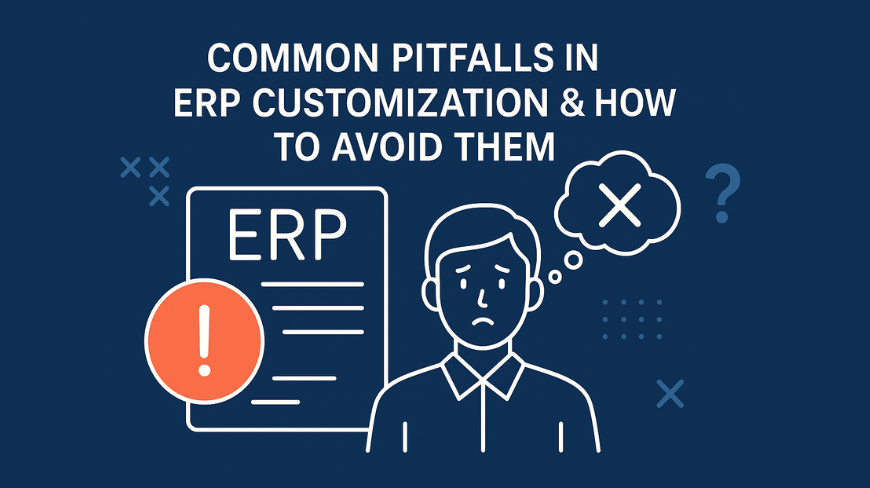Enterprise Resource Planning (ERP) systems are powerful tools that streamline operations, improve decision-making, and drive growth. However, when it comes to customizing ERP software, many businesses encounter challenges that can delay implementation, increase costs, or even result in project failure.
At PiERP , we’ve helped numerous organizations successfully navigate ERP customization. In this blog, we highlight common pitfalls in ERP customization and provide practical tips on how to avoid them.
1. Over-Customization
The Pitfall:
One of the biggest mistakes is customizing the ERP software too heavily to match existing business processes. While it may seem logical, this often defeats the purpose of implementing an ERP system and can make upgrades complex or even impossible.
How to Avoid It:
- Align business processes with industry best practices supported by the ERP.
- Limit customizations to those that provide real business value.
- Use configuration features before opting for code-level changes.
2. Lack of Clear Objectives
The Pitfall:
Starting customization without clear goals leads to scope creep, confusion, and wasted resources.
How to Avoid It:
- Define business goals and KPIs before customization begins.
- Involve all stakeholders during the planning phase.
- Use requirement-gathering templates provided by your ERP vendor or partner.
3. Ignoring User Input
The Pitfall:
Customizing the system based only on management input without involving end users can lead to poor adoption.
How to Avoid It:
- Conduct user workshops to gather input.
- Involve end-users during testing and feedback loops.
- Offer training sessions using real, customized scenarios.
4. Insufficient Testing
The Pitfall:
Skipping proper testing can result in system glitches, data inconsistencies, or workflow issues post-launch.
How to Avoid It:
- Run unit, integration, and user acceptance tests (UAT).
- Simulate real-world scenarios before going live.
- Document all test cases and fixes.
5. Poor Documentation
The Pitfall:
Failing to document customizations can cause issues when onboarding new team members or during future upgrades.
How to Avoid It:
- Maintain comprehensive documentation for each customization.
- Use version control for code and config changes.
- Store documents centrally and keep them updated.
6. Choosing the Wrong ERP Partner
The Pitfall:
Not all ERP vendors or consultants understand your industry-specific needs. Partnering with the wrong one can cost you time and money.
How to Avoid It:
- Choose a partner like Pierp with a proven track record in ERP customization and industry expertise.
- Ask for case studies and client references.
- Ensure the partner provides ongoing support and training.
7. Neglecting Post-Implementation Support
The Pitfall:
Once the ERP system is live, many businesses stop investing in support, updates, and continuous improvement.
How to Avoid It:
- Establish a long-term support and optimization plan.
- Schedule periodic system health checks and performance reviews.
- Leverage Pierp’s ERP support services for continuous success.
Final Thoughts
Customizing an ERP system can unlock significant benefits — but only when done strategically. Avoiding these common pitfalls can help you implement a system that truly supports your business goals without overcomplicating or breaking it.
If you're planning an ERP implementation or need expert help with customization, reach out to the team at PiERP. Our experts are here to guide you every step of the way.






